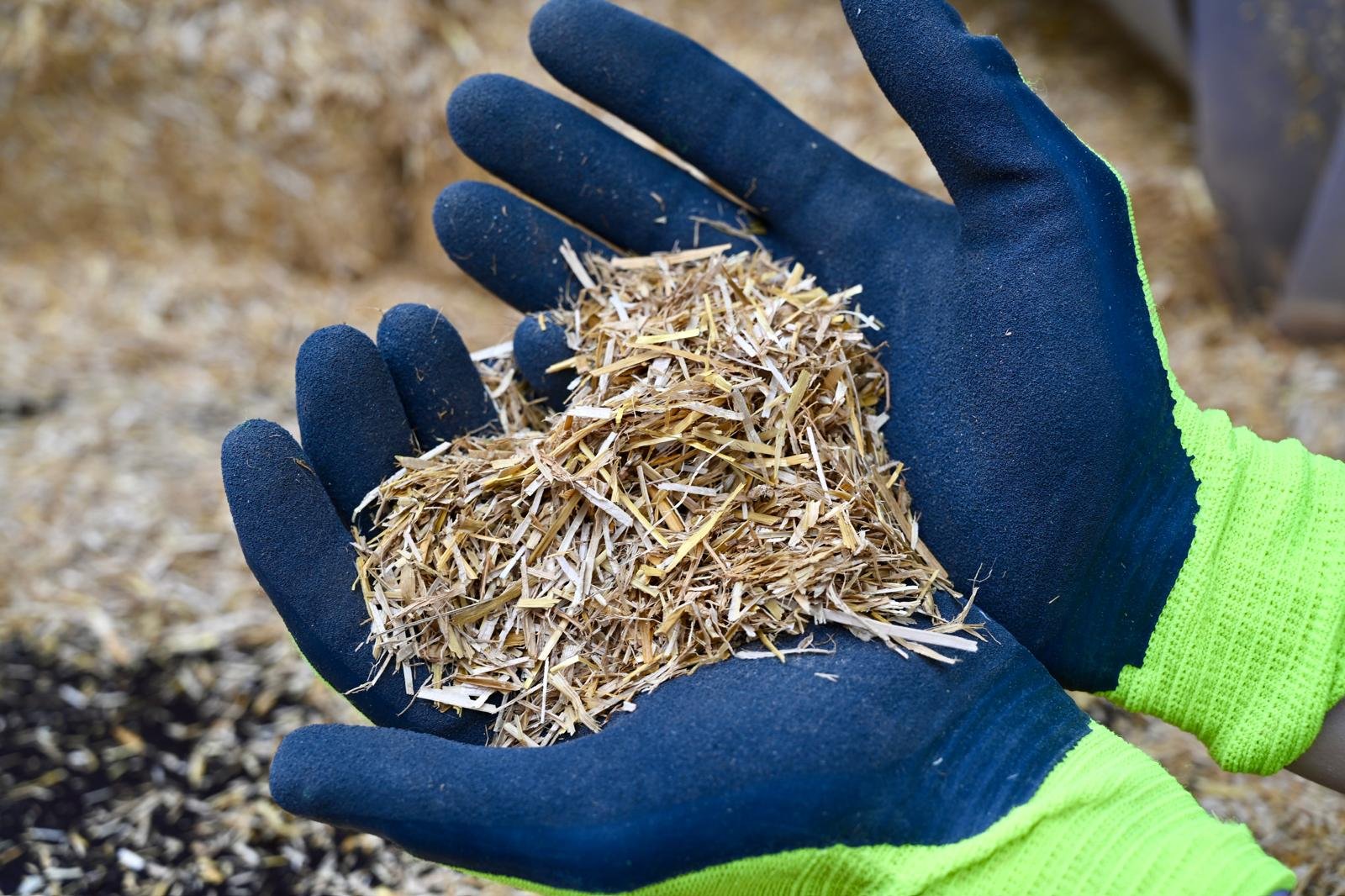More and more data from biobased insulation material blow-in straw in NMD

Demand for biobased insulation materials such as blow-in straw is growing. Reason for Building Balance to work with the industry to collect the necessary data for inclusion in the National Environmental Database. First with category 2 data of blow-in straw, now also the trajectories for category 1 declarations of blow-in straw are running. We talked about it with Kristian Maters on behalf of the Vakgroep Strobouw, and project manager research and certification at Building Balance Sander Rutten.
To stimulate building with natural materials, the National Approach to Biobased Building exists since 2023. In close cooperation with the ministries of LVVN, VRO, EZK and I&W, Building Balance Foundation implements this National Approach (NABB).
Building Balance initiates, stimulates and supports local, regional and national chains of farmers, builders and industry. In addition, the foundation is committed to creating more demand for bio-based materials and helping existing and new processing industries scale up.
Certificates and statements needed
An important part of this is making sure you have the right certificates and statements. As project manager of research and certification at Building Balance, that is what Sander Rutten is concerned with.
Sander: “Building with natural insulation materials such as grain straw, miscanthus, flax and fiber hemp has many advantages. They retain CO2, provide a healthier indoor climate and a better living environment. Growing such crops also offers new prospects to farmers.”
“However, the lack of proper certificates and declarations still stands in the way of large-scale application of bio-based insulation materials. Therefore, we are working hard to obtain those certificates and declarations.”
“For example, there will soon be KOMO certificates for the product straw and prefabricated walls and floors with blow-in straw, and insulation companies will be able to certify for the application of blow-in straw. In addition, we are thus collecting data for environmental declarations in the NMD, so that architects can count on blow-in straw when designing buildings and determining the environmental score.”

Retrieving data from processors
In collecting the necessary data for the category 2 declaration of blow-in straw, Building Balance received help from Kristian Maters of the Vakgroep Strobouw, the trade association of straw builders. Kristian himself also has a carpentry factory, in which HSB elements are made using blow-in straw as insulation material.
“Actually, it's pretty straightforward what we had to do to retrieve that data, namely contact blow-in straw processors to retrieve data. For this we worked with Fouragehandel Verhoeven of Soerendonk, Mussche Handel & Transport of Staphorst, Agrifirm of OldAmbt and Agristro of Winschoten.”
“To them we asked questions such as: where does the straw you use come from and how many transport movements are needed? How is/is it packaged, what percentage of the product can be used as blow-in straw and what happens to the rest? How exactly does your production process work, how much energy do you use in the process and what for? So a lot of basic questions.”

Making the data usable
Sander: “In addition to the data we retrieved through this, we were able to use an existing European map for growing straw. That life-cycle analysis was already there. Hedgehog Company then helped us with translating that data to the Dutch situation as well as merging the data collected from processors into usable information for the category 2 declaration.”
Blown-in straw is now listed with category 2 maps in the NMD for application as interior wall insulation, as exterior wall insulation and as insulation for pitched roofs. “The same data from the NMD are also used to 'mine' carbon certificates for long-term storage of CO2 in buildings. Those certificates are tradable and provide additional money for farmers.”
More CAT 1-declarations on the way
The next step is to also make more and more category 1 declarations of blow-in straw findable in the NMD. Sander: “Several processors are now working on this, such as Vestjens with their blow-in straw. For CAT 1 declarations, the burden of proof is higher. You need just a bit more and more specific information for it. The advantage is that the environmental score will be even better as a result.”
Kristian: “We are also working on mapping the recycling process of blow-in straw. Now the calculations are based on a building life of 75 years, with the assumption that building materials will then be burned/disposed of/waste. But blow-in straw is pure nature and super suitable for reuse in other applications. Once that can be included in the calculations, the environmental score becomes even better, because then the value of carbon storage also becomes visible in the EIA score.”